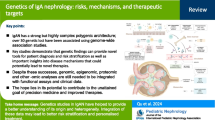Abstract
Associations of angiotensin-converting enzyme (ACE) gene insertion/deletion (I/D) functional single-nucleotide polymorphisms (SNPs) with vitiligo have been reported, but the results were inconsistent. To investigate the association of SNPs in the intron 16 of ACE gene with vitiligo susceptibility by the meta-analysis, case-control studies were conducted by searching from PubMed, HighWire and China National Knowledge Infrastructure as of May 2011. A total of 6 studies with 828 patients and 1,215 controls was finally identified. All control samples were in Hardy–Weinberg equilibrium. According to the clinical typing, the data were divided into pooled subgroup and generalized subgroup. Our meta-analysis showed that a significantly increased vitiligo risk was associated with the D/D genotype compared with the I/I + I/D genotype (Odds ratio (OR) 1.79, 95 % confidence interval (95 % CI) 1.35–2.38, P < 0.0001) and the D allele compared with the I allele (OR 1.72, 95 % CI 1.45–2.04, P < 0.00001) in pooled subgroup. In summary, this meta-analysis demonstrated that ACE D/D homozygote and D allele were significantly associated with an increased risk of vitiligo in pooled population. The results indicated that the people with ACE D/D homozygote and D allele may suffer from vitiligo, but of a generalized type. ACE polymorphism might be used as biomarkers for vitiligo risk prediction for pooled vitiligo.



Similar content being viewed by others
References
Akhtar S, Gavalas NG, Gawkrodger DJ, Watson PF, Weetman AP, Kemp EH (2005) An insertion/deletion polymorphism in the gene encoding angiotensin converting enzyme is not associated with generalised vitiligo in an English population. Arch Dermatol Res 297:94–98
Bhatia PS, Mohan L, Pandey ON, Singh KK, Arora SK, Mukhija RD (1992) Genetic nature of vitiligo. J Dermatol Sci 4:180–184
Deeba F, Syed R, Quareen J, Waheed MA, Jamil K, Rao H (2010) CTLA-4 A49G gene polymorphism is not associated with vitiligo in South Indian population. Indian J Dermatol 55:29–32
DerSimonian R, Laird N (1986) Meta-analysis in clinical trials. Control Clin Trials 7:177–188
Dwivedi M, Laddha NC, Shajil EM, Shah BJ, Begum R (2008) The ACE gene I/D polymorphism is not associated with generalized vitiligo susceptibility in Gujarat population. Pigment Cell Melanoma Res 21:407–408
Egger B, Procaccino F, Lakshmanan J, Reinshagen M, Hoffmann P, Patel A, Reuben W, Gnanakkan S, Liu L, Barajas L, Eysselein VE (1997) Mice lacking transforming growth factor alpha have an increased susceptibility to dextran sulfate-induced colitis. Gastroenterology 113:825–832
Jin SY, Park HH, Li GZ, Lee HJ, Hong MS, Hong SJ, Park HK, Chung JH, Lee MH (2004) Association of angiotensin converting enzyme gene I/D polymorphism of vitiligo in Korean population. Pigment Cell Res 17:84–86
Lv YJ, Liao WJ, Luan Q, Wang H, Wang L, Li Q (2011) The polymorphism of catalase T/C codon 389 in exon 9 and vitiligo susceptibility: a meta-analysis. J Eur Acad Dermatol Venereol 25:955–958
Nath SK, Kelly JA, Namjou B, Lam T, Bruner GR, Scofield RH, Aston CE, Harley JB (2001) Evidence for a susceptibility gene, SLEV1, on chromosome 17p13 in families with vitiligo-related systemic lupus erythematosus. Am J Hum Genet 69:1401–1406
Passeron T, Ortonne JP (2005) Physiopathology and genetics of vitiligo. J Autoimmun 25(Suppl):63–68
Pehlivan S, Ozkinay F, Alper S, Onay H, Yuksel E, Pehlivan M, Ozkinay C (2009) Association between IL4 (−590), ACE (I)/(D), CCR5 (Delta32), CTLA4 (+49) and IL1-RN (VNTR in intron 2) gene polymorphisms and vitiligo. Eur J Dermatol 19:126–128
Philips MA, Kingo K, Karelson M, Rätsep R, Aunin E, Reimann E, Reemann P, Porosaar O, Vikeså J, Nielsen FC, Vasar E, Silm H, Kõks S (2010) Promoter polymorphism −119C/G in MYG1 (C12orf10) gene is related to vitiligo susceptibility and Arg4Gln affects mitochondrial entrance of Myg1. BMC Med Genet 11:56
Rahner N, Höefler G, Högenauer C, Lackner C, Steinke V, Sengteller M, Friedl W, Aretz S, Propping P, Mangold E, Walldorf C (2008) Compound heterozygosity for two MSH6 mutations in a patient with early onset colorectal cancer, vitiligo and systemic lupus erythematosus. Am J Med Genet A 146A:1314–1319
Rigat B, Hubert C, Alhenc-Gelas F, Cambien F, Corvol P, Soubrier F (1990) An insertion/deletion polymorphism in the angiotensin I-converting enzyme gene accounting for half the variance of serum enzyme levels. J Clin Invest 86:1343–1346
Song YH, Connor E, Li Y, Zorovich B, Balducci P, Maclaren N (1994) The role of tyrosinase in autoimmune vitiligo. Lancet 344:1049–1052
Tippisetty S, Ishaq M, Komaravalli PL, Jahan P (2011) Angiotensin converting enzyme (ACE) gene polymorphism in vitiligo: protective and predisposing effects of genotypes in disease susceptibility and progression. Eur J Dermatol 21:173–177
Acknowledgments
We are grateful to Fan Jiayong for his effort in English polishing. This study was supported in part by the Chinese National Nature Science Foundation (81102291).
Author information
Authors and Affiliations
Corresponding author
Additional information
Y. Lv, Y. Lv and Q. Li contributed equally to this paper.
Rights and permissions
About this article
Cite this article
Lv, Y., Lv, Y., Li, Q. et al. Association of ACE gene I/D polymorphism with vitiligo: a meta-analysis. Arch Dermatol Res 305, 365–370 (2013). https://doi.org/10.1007/s00403-013-1315-z
Received:
Revised:
Accepted:
Published:
Issue Date:
DOI: https://doi.org/10.1007/s00403-013-1315-z




